Autumn Escapes to Greece’s Mountains and Lakes
When the summer crowds depart, Greece’s...
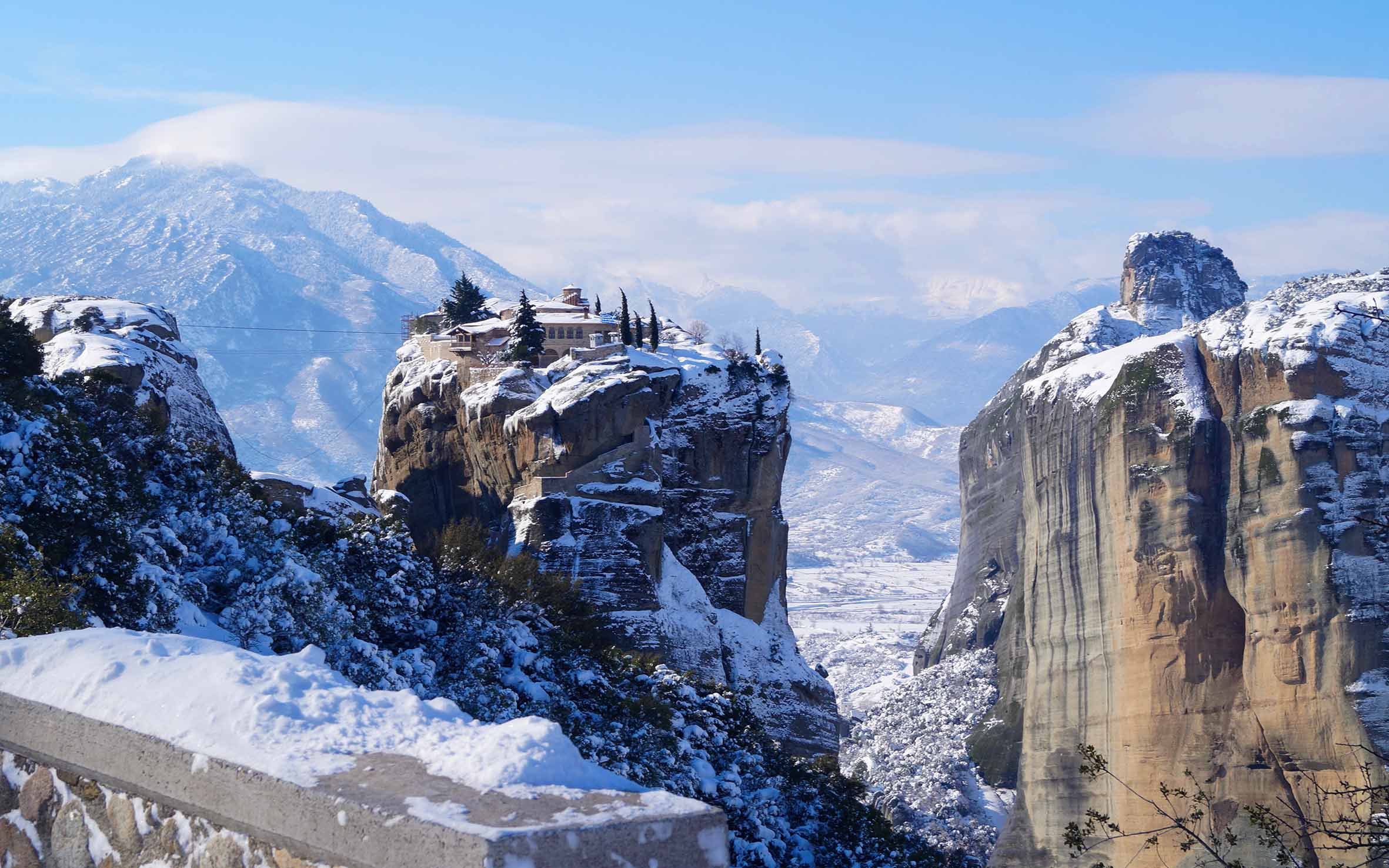
One of the stunning monasteries of the UNESCO World Heritage center of Meteora.
© Shutterstock
So, just in case there is any confusion, yes, Greece does have a winter. The dry-baked Cycladic islands turn green as the rains arrive; their inhabitants bundle up against temperatures that can sink to the low single digits when biting northerlies whip through the Aegean.
On the mainland, mountain villages are frequently covered in blankets of snow. Many of the peaks above are dressed in white from November to April.
In fact, it’s pretty great.
Winter is the time to swap the sandals for hiking boots, and the cold beachside beer for a brandy or warm rakomelo by the fireplace. Hearty, slow-cooked stews replace light summertime salads, and a whole host of different seasonal products begin to appear: wild mushrooms, juicy oranges, fat chestnuts.
This is a time to experience a different sort of Greece – one of rivers, mountains and glorious natural landscapes as yet undiscovered by mass tourism. One that is emptier, wilder but also comforting in its own way, insulated from the rush and chaos of the modern world.
Of course, that doesn’t mean one needs to rough it. Accommodation options range from tidy bed-and-(excellent)-breakfasts to 5-star luxury spa resorts. And with a range of well-run companies offering organized activities from trekking to ski touring to mountain biking, there has never been a better time to discover Greece in the wintertime.
Below we’ve put together a list of Greece’s top winter destinations. It is by no means exhaustive, but a selection of great entry point to Greece’s mountainous winter wonderlands:
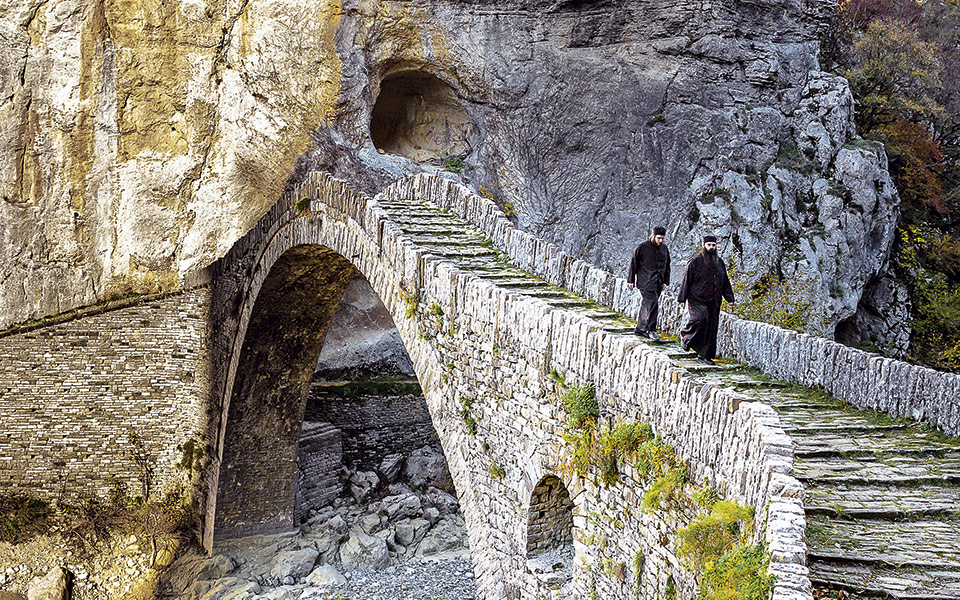
The Noutsos or Kokkoros bridge (1750) crosses the Vikos River between the villages of Koukouli, Dilofo and Kipi in the region of Zagori
© Yannis Larios
When it comes to Zagori, superlatives fail. Across 1000 sq km of densely forested, mountainous landscape punctuated by deep gorges, pristine rivers, waterfalls, caves and more, 46 stone-and-slate built villages (the Zagorohoria) complete what can only be called a mountain paradise.
Nature-loving hikers will struggle to choose from the hundreds of kilometers of well-marked trails that run over old stone bridges, past monasteries inhabited and not, through protected forests teeming with life and across ridges with views that are heartbreaking.
More experienced mountaineers can challenge themselves by tackling the alpine territory of the surrounding peaks, while a number of companies offer dozens of activities from backcountry skiing to whitewater rafting to organized hikes, making the natural wonders of the area accessible to all.
Each of the villages is prettier than the last – the legacy of master masons considered to be the greatest in the country – and the accommodation options are many and of exceptional quality. And when you feel you need to dip back into civilization, the cultured city of Ioannina is a short drive away and a destination in its own right.
Simply a must-visit.
Good For: Nature lovers, hikers, whitewater rafters, adventurers, anyone with a pulse.
Bad For: People who hate mountains, I guess.
Read more about Zagorohoria here.
500 km from Athens (a 6 hour drive). 300 km from Thessaloniki (3 hour drive). One can also fly to the airport of Ioannina – 1 hour’s drive from the first village. A car to get around is a must (equipped with snow chains in the winter).
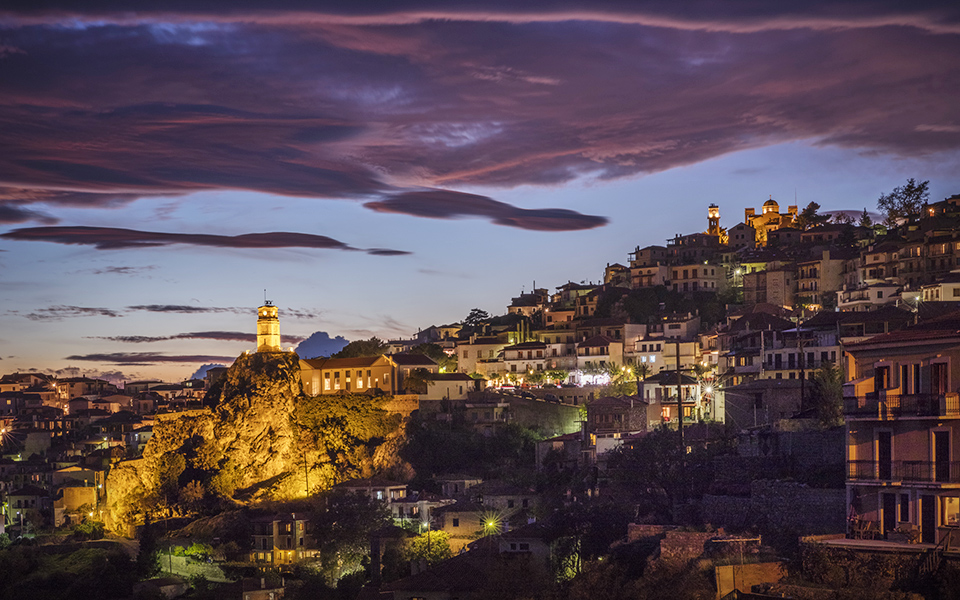
Arachova
© Perikles Merakos
The village of Arachova has long been dubbed the ‘Mykonos of the Winter‘, being the hotspot that attracts more visitors than probably any other single winter destination.
The nearest village to Greece’s biggest ski resort on Mount Parnassos, and a mere 3 hours from Athens, Arachova becomes a fully-fledged cosmopolitan hangout in the cold months, complete with high-end shops, ski rental outlets, luxury hotels and spas, gourmet and traditional restaurants and plenty of bars and nightlife.
In terms of the skiing, while no Greek resort comes close to the size of the major centers in the Alps and elsewhere, Parnassos does offer some great slopes of all difficulty levels, as well as access to back-country runs for the more adventurous. While on sunny weekends it can get very crowded, during the week the resort can offer some very satisfying skiing with zero lift lines.
Beyond the slopes, the mountain offers plenty more – most notably the archaeological site of Delphi, the onetime seat of the famed oracle, which is only a short drive from Arachova. There are plenty of satisfying hikes through the mountain’s forests as well, including one that takes you to the archaeological site, with breathtaking views over the valley deep below.
Good For: Skiers, snowboarders, nature-lovers, archaeology buffs, people who want to show off their expensive new snow boots.
Bad For: Agoraphobes.
Read more about Arachova here.
A 2.5 – 3 hour drive from Athens. Alternatively you can also get there by KTEL intercity buses from Athens, or by privately run ski buses from Athens which will also take you to the ski resort.
See here for details.
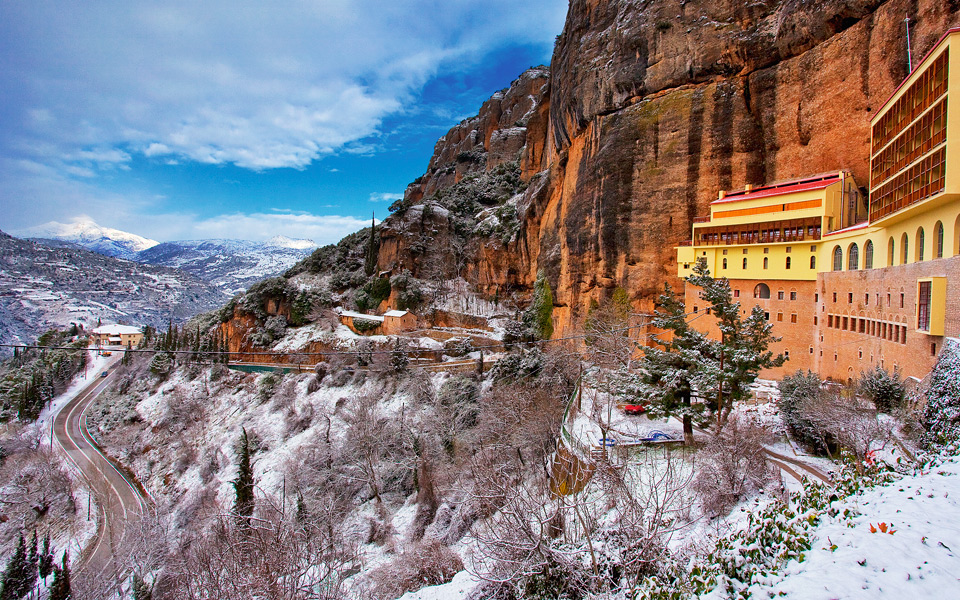
The Big Cave (Megalo Spilaio) Monasterym at Kalavryta.
© Perikles Merakos
If Arachova is the Mykonos of the winter, then one could say that Kalavryta is the season’s Naxos – offering perhaps even more variety than its more famous counterpart, but with a slightly less frenetic atmosphere.
Built on the slopes of Mount Helmos (meaning snowy mountain) in the Peloponnese, Kalavryta is a small town that is a perfect jumping off point for enjoying winter sports and activities in the area. Located only 2.5 – 3 hours from Athens, the mountain condenses a boggling diversity of landscapes in a relatively small area – from pine and fir forests and alpine lakes to extensive, visitable caves, to the fairytale plane tree forests in Planitero below where you can enjoy fresh trout next to bubbling crystal springs.
But the area is probably best known for its ski resort which is a close rival to that of Parnassos, with ski runs for all abilities, although slightly less modern lifts. The town has well-developed tourism infrastructure with numerous hotels, spas and guesthouses. Many of the pretty, surrounding villages also offer great accommodation options.
Aside from nature-loving activities, the town and surrounding area also packs in plenty of culture and history, including a WWII museum, spectacular monasteries and a unique railway line that connects Kalavryta with the coastal village of Diakofto and is simply one of the most beautiful in Europe.
Good For: Skiers, snowboarders, nature-lovers, history buffs, families, train enthusiasts.
Bad For: Those who prefer the confines of a dull, gray, monotone world.
Read more about Kalavryta and Helmos here.
A 2.5 – 3hr drive from Athens, also accessible by intercity bus and from Diakofto via the rack railway line.
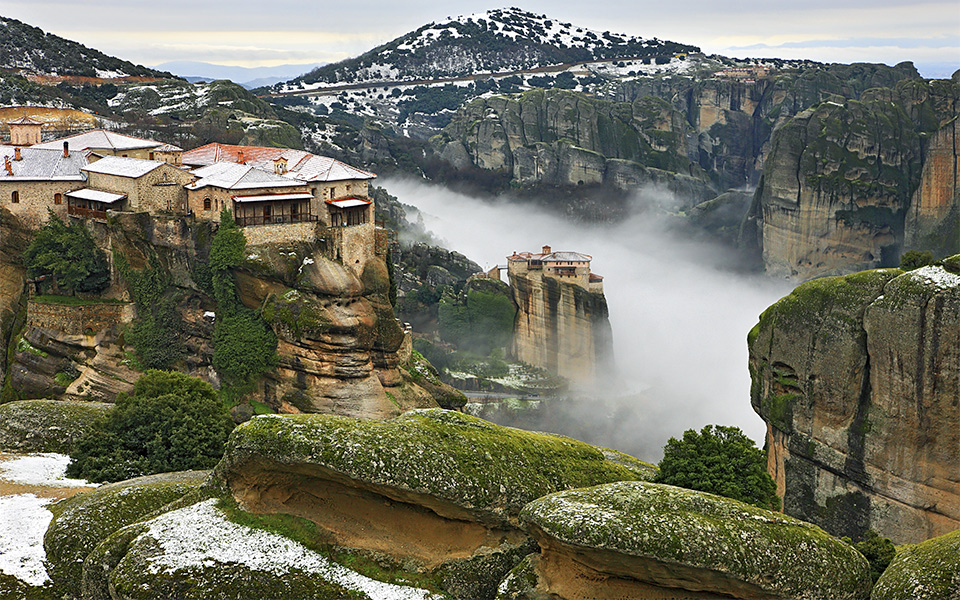
Meteora
© Shutterstock
A true bucket-list destination, the first sight of the monasteries perched improbably on top of pillars of rock in this UNESCO World Heritage site is a take-your-breath-away moment. While many visit in the summer, the baking heat and large crowds can detract from the experience. The fall and winter, however, lend themselves to taking in the true majesty of the place.
Of the total of 24 monasteries that once formed this 1000-year-old community, 6 are still in operation and open to the public. Visiting them is to step into a world unto itself with wondrous examples of religious art on display in the churches and museums.
One can drive to the monasteries or hike up to them along a beautiful trail that winds between the pillars of rock. But for a truly out-of-this-world experience you can opt for a tour from above via hot air balloon.
The unique geological formations have also rendered the area a popular rock-climbing destination, while mountain biking, trekking and other activities are also on offer, plunging you into the surrounding nature. The neighboring town of Kalabaka offers plenty of high quality accommodation options and tourism services.
Good For: History buffs, religious tourists, hikers, nature lovers, hot air balloon enthusiasts, aspiring hermits.
Bad For: Bond villains. (See: For Your Eyes Only)
Read more about Meteora here. See a gallery of images here.
350 km north of Athens. The journey takes around four hours by car. Alternatively, Kalabaka, the city closest to Meteora, can be reached by train from Athens Railway Station. A return ticket costs around €30. Tickets can be booked online via www.trainose.gr.
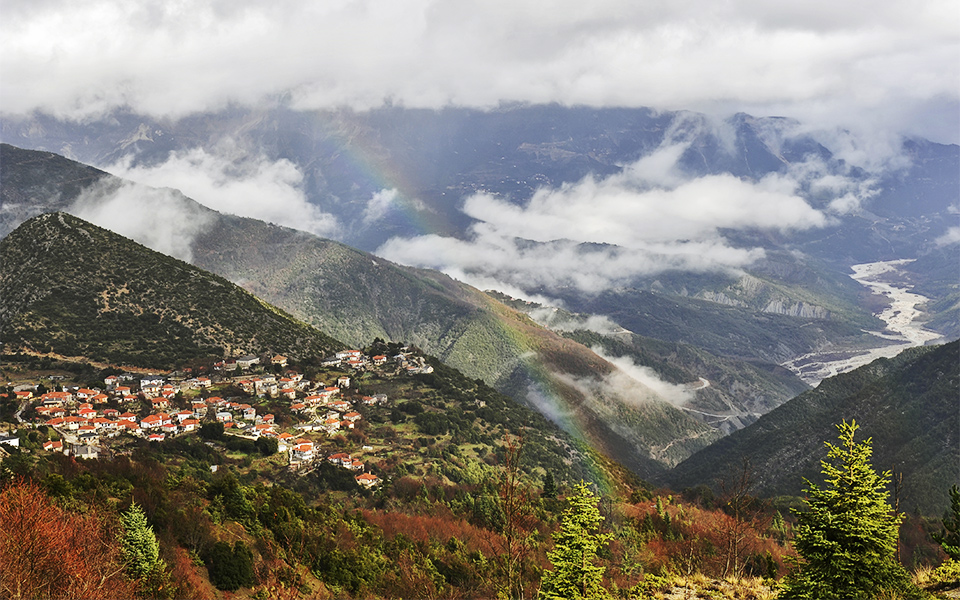
Tzoumerka
© Shutterstock
Forming the lower part of the huge Pindos range in northwestern Greece, the Tzoumerka mountain chain is a series of peaks that effectively form a giant ridge running roughly north to south along the boundary between the regions of Ioannina and Arta.
Tzoumerka comes with all of the trappings of the best of mountainous Greece; crystal springs and waterfalls feeding wide rivers, canyons, dense forests and plenty of wildlife make up the heart of the National Park of Tzoumerka. 47 villages dot the wild landscape which is reminiscent of Zagori (see above).
However unlike Zagori, the region is overall much less developed touristically making this a good place to experience the Greek countryside at its wildest, and to really get away from it all. If you want to jump off the tourist bandwagon, there are plenty of places to do so here.
The prettiest (and most visited) villages are Syrrako and Kalarrites on the northwestern side, while a mountain refuge in the village of Melissourgi offers a range of activities. Whitewater rafting can be done on the River Arachthos all year round, while a number of companies also arrange a slew of other activities from mountain biking to horseback riding. Be advised though that a car is essential and the roads are long and winding between villages.
Good For: Adventurers, nature lovers, people seeking refuge from the apocalypse.
Bad For: People who want to show off their expensive new snow boots. No one will care.
Read more about Tzoumerka here.
From Athens you can drive to Pramanta (418kms) which is the central village of Tzoumerka in about 6 hours via the Athens – Patras road and the Rio bridge (for a small car petrol and tolls will cost about 65 euros).
Alternatively, you can take a one-hour flight from Athens to Ioannina. From Ioannina Pramanta it is about a 1.5 hour drive (62 kilometers).
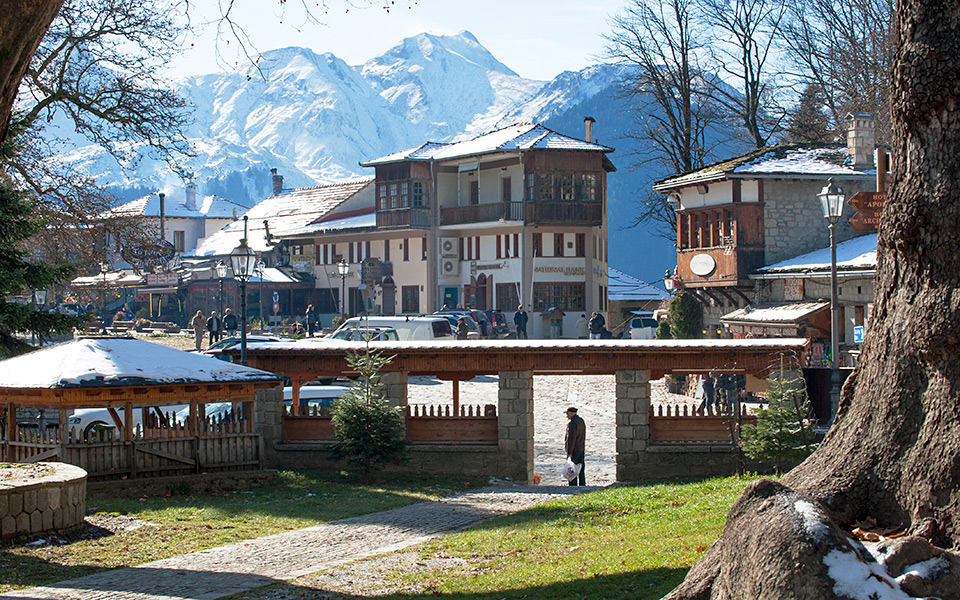
Metsovo
© Julia Klimi
To take your hit of the natural beauty of Epirus cut with a dose of well-mannered culture, the small and tidy stone-built town of Metsovo near the Tzoumerka mountain range may be more your speed. An important military and trading post in centuries past, Metsovo flourished in the 18th and 19th centuries, developing trade links to key cities throughout Europe.
Metsovo’s grandeur might have subsequently faded were it not for a foundation established in the 1940s by Evangelos Averoff, a government minister who hailed from the town. Among other work, the Averoff Foundation has, over the decades, supported local wine, and cheesemaking industries and helped promote tourism in the area, making Metsovo today a top mainland destination.
Today visitors can enjoy wine and gastronomic tourism at the Katogi Averoff Hotel and Winery among other quality hotels, together with all of the many outdoor activities the wider area has to offer – including skiing and snowboarding at not one but three nearby small resorts. For culture hounds the well-put-together folk museum and art gallery are must visits.
Good For: Nature Lovers, oenophiles, food lovers, classy folk.
Bad For: Uncouth philistines, urban layabouts.
Read more about Metsovo here.
Metsovo is approximately a 4½ drive from Athens. A road trip including and fuel and tolls is about 115 euros. From Thessaloniki it is only 2.5 hours along a newly constructed highway.
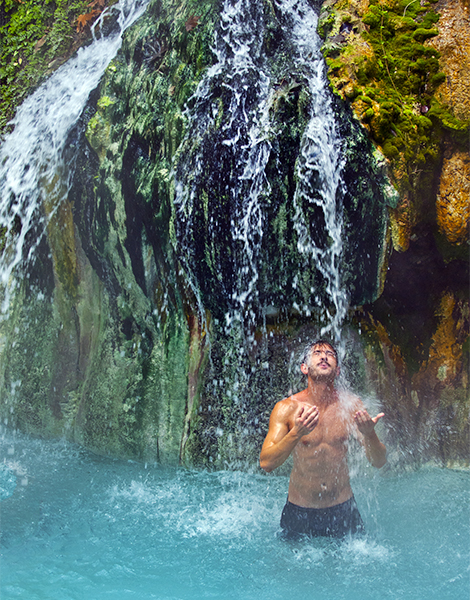
Pozar thermal waters
© Clairy Moustafellou
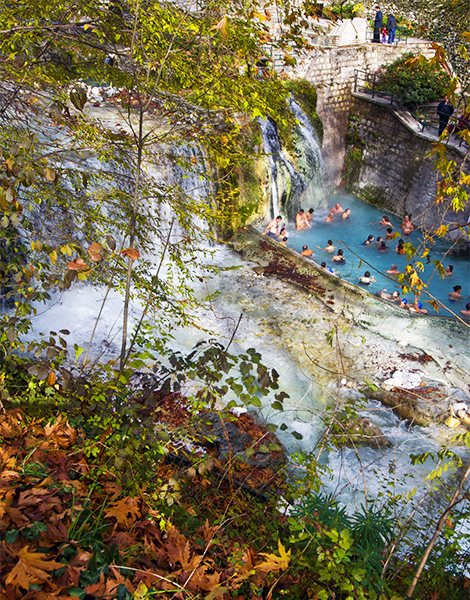
© Clairy Moustafellou
In the depths of winter is there anything better than easing into the hot waters of a natural thermal spring? No, no, there is not.
While thermal springs exist in many parts of the country, one of the best places to take to Greece’s healing waters is in the Pozar Spa in the region of Pella in Macedonia in the north of Greece, at the foot of Mount Voras (aka Kaimaktsalan).
Here the thermal 37 C Toplitsa river gushes out of springs and through a ravine where, surrounded by trees and waterfalls, a facility has being created fed by the river including 48 private baths, two indoor pools and two small hamam facilities, as well as a modern hydrotherapy center with eight 6-person pools. A 50m swimming pool is also located on a specially designed plateau, while visitors may also enjoy the small thermal waterfalls along the river.
Bliss.
Accommodation options abound in the nearby village of Loutraki and the ski resort of Kaimaktsalan is only an hour away to get into the white stuff.
Good for: Aches and pains, skiers, skiers with aches and pains, your general sense of wellbeing
Bad for: Seriously, who doesn’t like a hot bath?
Read more about Pozar and more hot springs here.
Loutraki of Pella is located 120 km north of Thessaloniki, a roughly 1.5 – 2 hour drive.
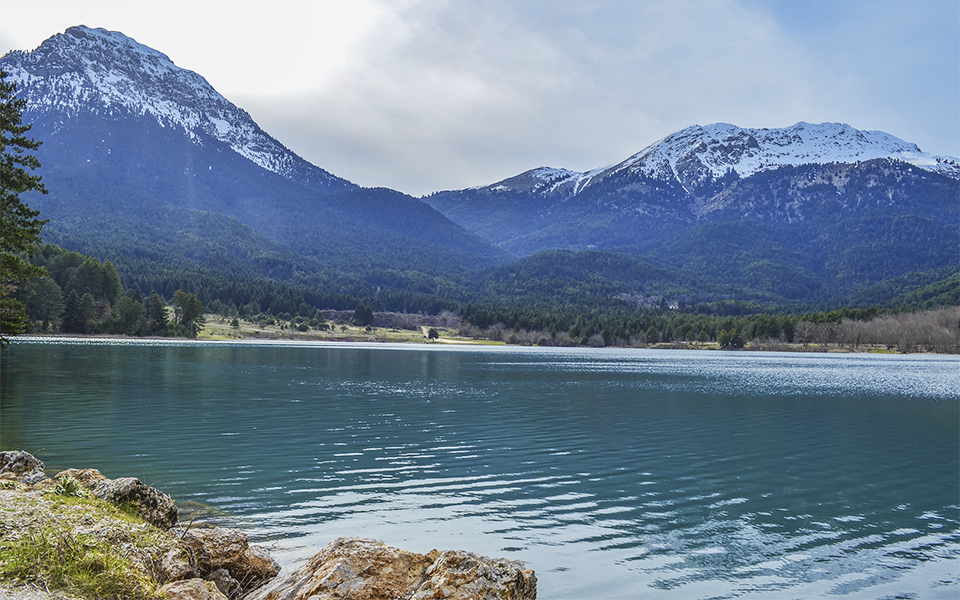
Doxa Lake
© Shutterstock
Driving up the serpetine roads and passing through the many stone-built villages into the mountains of Corinth, you’ll feel as though you’ve travelled back in time. If it weren’t for the odd visible electricity line and the cars parked at the edges of the villages, you would believe it.
Traditional tavernas with amazing views of the valleys below are surrounded by a constant lingering smell of wood fires, smoked meats, and hearty stews. The fact that these rustic little settlings of houses in the middle of nature exist so close to Athens might seem surprising, but they survive on tourism from the capital, and maintaining their traditional character is in everyone’s interest.
Opportunities for mountain biking, hiking and more abound, and the higher up the mountain you go, the smaller the villages get. What most of them have in abundance is good tavernas, shops selling locally produced spoon sweets, liqueurs, exceptional locally grown beans, and very nice hotels.
If you need a break from eating and watching the view, go see the Virgin of the Rock chapel, or drive to the marvelous Lake Doxa and the Saint George monastery above it. The view from here will bring tears to your eyes.
Good for: Hungry humans, people seeking to relax, last-minute planners.
Bad for: People who prefer inconvenient locations.
Read more about the mountains of Corinth here.
About 140 km from Athens (a 1.5 hour drive).
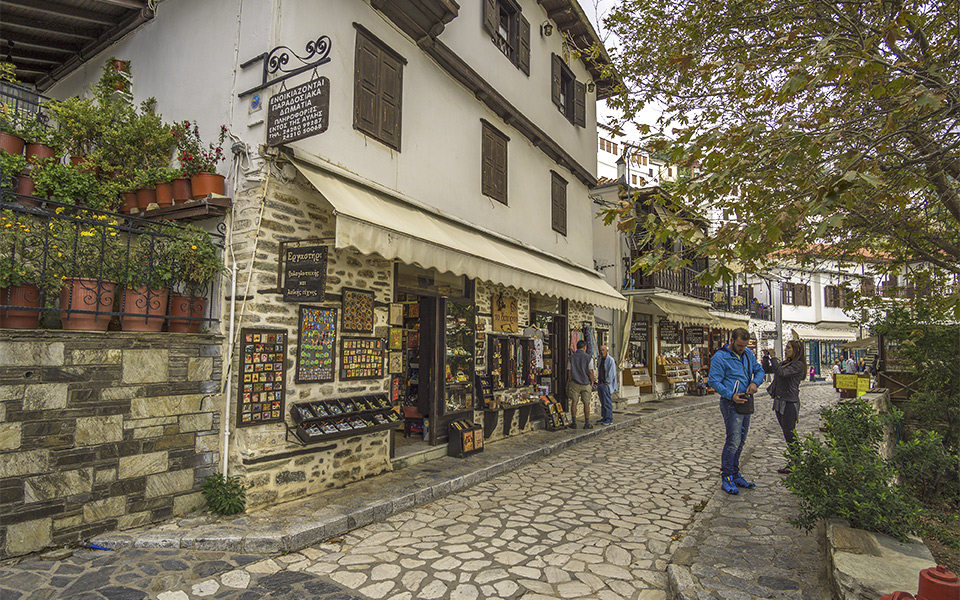
The village of Makrynitsa at Pelion.
© Shutterstock
In Pilio (aka Pelion), nature offers a smorgasbord of atmospheric surroundings.
The peninsula is covered by densely wooded, almost jungle-like, mountain slopes. Driving through it, every now and again there’s a clearing where the sun breaks through, and you’ll find yourself surrounded by apple groves. Far below you the sea glistens, and all you hear is birdsong. If you stop to pick a juicy apple from a tree, you’ll likely get a flash of an image of a talking snake. Don’t let it stop you.
While the beaches below are also dramatically beautiful, the many mountain villages are what calls for a visit during winter.
The villages are rustic, yet picturesque and tourist friendly, with cobblestoned streets and large paved central squares. Gigantic, age old plane trees creates a natural fairytale like roofs over your head. Shops sell homemade jams and spoon sweets, and the tavernas serve surprisingly contemporary versions of traditional Greek food.
Good for: Explorers, nature lovers, families, foodies.
Bad for: Loathers of the color green.
Read more about Pilio here.
460 km from Athens (a 4.5 hour drive). You can also travel to Volos by train, bus or plane, but you will need to rent a car there to really explore Pilio.
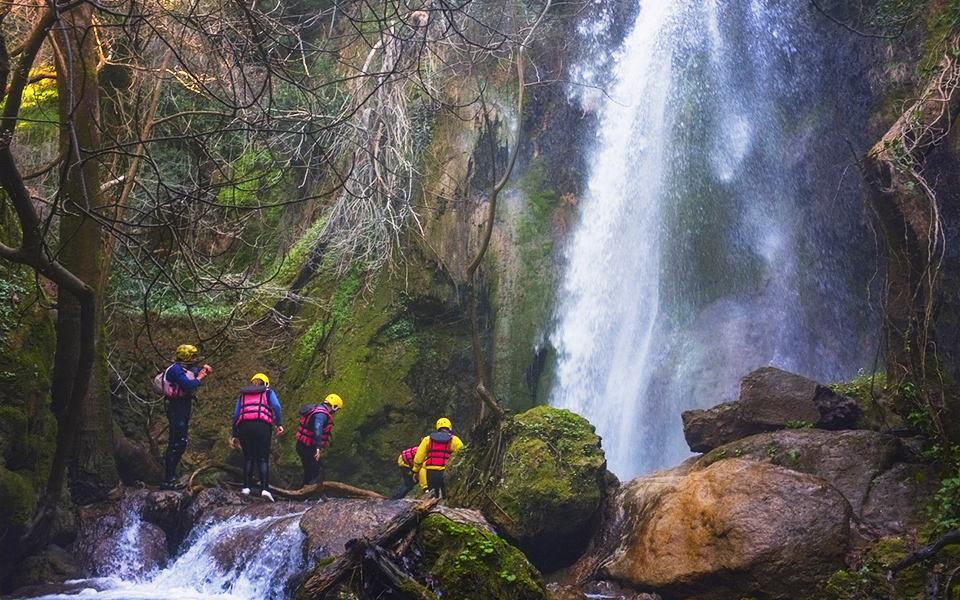
Lousios river
© Perikles Merakos
Even in a land with as much natural beauty as Greece, the region of Arcadia has stood out since antiquity, with its name becoming a poet’s byword for paradise. It is little surprise. Today, while, this region in the central Peloponnese continues to be under the radar of many international travelers, Greek tourists have long been visiting the villages around the gorgeous and naturally rich mountain of Mainalos, and for good reason.
The most famous of the villages is the grand dame of Dimitsana: attractive, stone-built, with great food views and cafes at every turn. It is just one of a host of attractive mountain villages in an area packed with impressive historical sites to visit, both ancient and modern.
The nearby mountain of Mainalos is a protected natural park, through which the Lousios river runs through the gorge of the same name, forming rapids and waterfalls in places. Whitewater rafting trips are on offer throughout the colder months as are mountain biking trips, organized hikes and much more.
Fantastic local products to take home, incredible monasteries and more complete the almost utopian scene. And all of this just a 2.5 – 3 hour drive from Athens making it a perfect destination for a quick and easy getaway into the mountains.
Good for: Nature lovers, history buffs, weekenders, hikers, whitewater rafters, mountain bikers, fauns, satyrs and forest nymphs.
Bad For: Those who believe Arcadia isn’t a real place you can go to.
Read more about Arcadia here.
Dimitsana, located 203 kilometers from Athens, is roughly a 2½ hour drive from the city. The return trip costs roughly €60 for fuel and road tolls.
When the summer crowds depart, Greece’s...
Unexpected discoveries and timeless classics. Everything...
Discover five mountain destinations where crisp...
Trace St. Paul the Apostle’s journey...